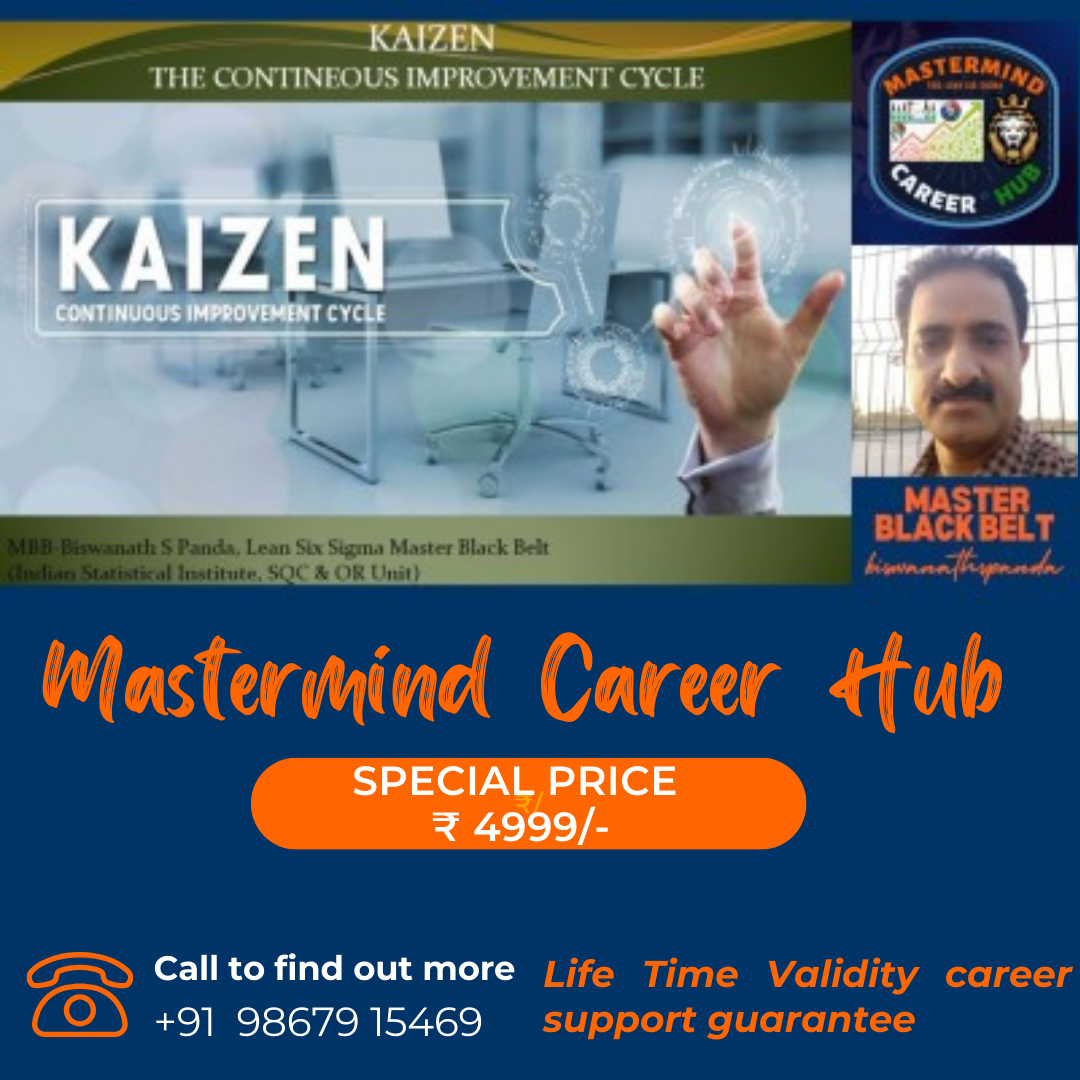There are no items in your cart
Add More
Add More
| Item Details | Price | ||
|---|---|---|---|
Unlock Your Potential for Lasting Growth with KAIZEN - The Continuous Improvement Cycle.
A culture of continuous improvement leads to limitless potential.
Today in a fast-changing world, products are designed within a short period of time as per customer demand or marketing requirements. Products are validated with basic requirements, without fully-fledged validation and testing. As we know customer demands for QUALITY, COST, and DELIVERY (QCD) increase day by day, and the products that were suitable yesterday, may or may not be suitable today. Results Customer complaints, Rejections, Reworks, Loss of function/ reduced function, product recalls, warranty issues, Customer dissatisfaction (due to repeated customer complaints and poor quality), and ultimately Loss of Business & Valued Customers. Kaizen- The Continuous Improvement Cycle technique is a Brahmashta (Ultimate Weapon) to improve our products and services at 37X in a year which requires People's involvement and discipline from starting from top to bottom in an organization. Benefits of Kaizen- The Continuous Improvement Cycle is Improvement in Quality, Reduction in Cost, Improvement in Productivity & Delivery, Reduction in Lead-time, and Improvement in Safety, Security & Sustainability. Higher Customer Satisfaction and finally Business Growth, Progress, and Success.
The continuous improvement cycle is a process of ongoing improvement in which employees are encouraged to identify and address areas for improvement in their work processes. This cycle involves identifying problems or areas for improvement, developing and implementing solutions, and then evaluating the results.
The process begins with identifying areas for improvement, which can be done through various methods such as observation, customer feedback, or data analysis. Once the problem or area for improvement has been identified, a solution is developed and implemented. This can involve making changes to processes, equipment, or even the work environment.
After the solution has been implemented, it is important to evaluate the results to determine if the improvement was successful and if any further adjustments are needed. If the improvement was not successful, the cycle begins again with identifying the problem and developing a new solution. If the improvement was successful, it becomes part of the standard operating procedure.
The continuous improvement cycle is an ongoing process that is integrated into the daily work routine, with the goal of continuously improving efficiency, quality, and customer satisfaction. It is an essential part of lean manufacturing and business management and can be applied to any type of organization or industry.
Kaizen, also known as the continuous improvement cycle, is a philosophy and practice that focuses on constantly seeking out and implementing small, incremental changes in order to improve efficiency, productivity, and overall quality.
The continuous improvement cycle involves identifying areas for improvement, analyzing the current process, implementing changes, and evaluating the results of those changes. This cycle is then repeated over and over again, with to continually improve processes or systems.
The key principles of kaizen include the involvement of all employees, a focus on continuous improvement, and the use of data and metrics to track progress and measure success. By involving all employees in the improvement process, everyone can contribute their ideas and knowledge, and the changes implemented are more likely to be embraced and supported.
Kaizen can be applied to any area of an organization, from manufacturing and operations to customer service and business strategy. By continuously seeking out and implementing small improvements, organizations can achieve significant, long-term benefits and stay competitive in their industry.
There are several benefits to implementing the Kaizen continuous improvement cycle in an organization:
Jane Doe is a linguist with 12 years of experience and certification in Italian, Spanish and French. She holds a teaching license from The National Teaching Institute, India.
Just starting out? No need to worry. Let’s take the first step together.
Pick up a new skill and learn why practice makes perfect.
Stuck on something? Discuss it with your peers in your virtual classroom.
Learn what makes you tick and how you can use it to your benefit.
Get access to guest lectures and mentorship by industry leaders.
Want to push the limits of what you can do? Gain the opportunity to become an expert.






